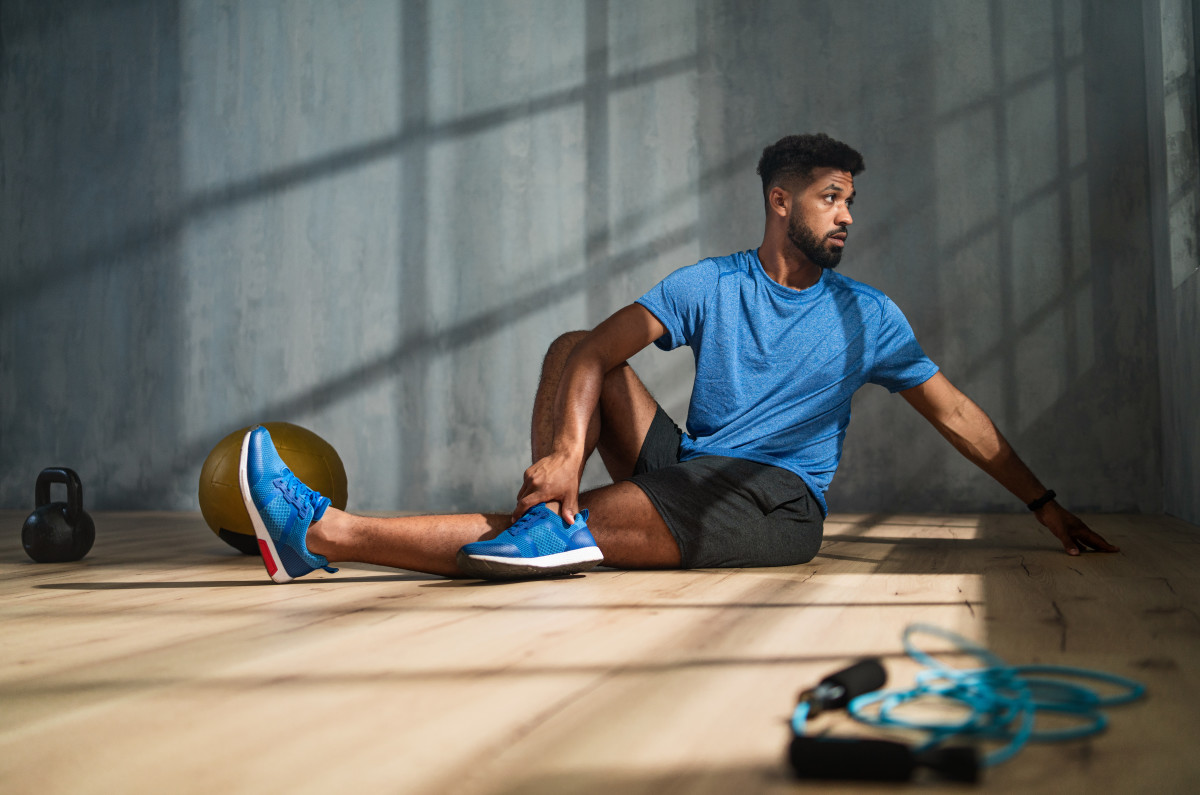Mobility training can help you lift heavier, squat deeper, run faster, and get the most out of your workouts. matter what your fitness goals are, mobility exercises allow your body to move more efficiently and reap more gains from hard work.
Thought of by many as an unnecessary or optional step in building strength and fitness, mobility training should be more than a monthly yoga session or a five-minute foam roller warm-up.
Mobility is one of the building blocks of a healthy body, says Brett Scott, D.P.T., a physical therapist, strength coach, and founder and owner of Barbell Therapy and Performance. “Everyone should do mobility training, but every individual's mobility training is going to look very different from one person to the other.”
For example, the mobility of a powerlifter will look different than an individual in their 80s who just needs a little extra help being able to bend down and pick something up. The powerlifter might base their mobility on the movement pattern of a deadlift while the senior may need more general training.
“If you can’t get into a good position to execute a lift, you won't be able to engage the muscles you’re trying to work, and you’re just increasing your risk for injury,” says Grayson Wickham, D.P.T., C.S.C.S., a New York-based physical therapist. So if you really want to get all the gains, it’s time to work mobility into your week.
What Is Mobility Training?
What exactly is mobility work? Stretching? Yoga? Bear crawls and walking lunges? It can be any of these things.
Mobility training is any type of exercise that helps your mobility, aka your ability to move freely and with ease. Though mobility is often used interchangeably with flexibility, mobility incorporates flexibility and strength to improve your joint's range of motion and protect the muscles that surround various joints—as opposed to being able to passively lengthen your muscles.
“While the words mobility, flexibility, and stability kind of get used interchangeably, mobility training refers to the use of exercises and stretching patterns to mobilize the body,” says Brian Kent, a Chicago-based Nike trainer and owner of BKSTRENGTH.
“When I think of mobility, I think of how well your body bends,” says Kent. “And then mobility training means using exercises and stretching patterns to ready the body for varying types of movement,” whether that be a workout or a walk down the street.
If you’re not hitting the depth you want on your back squat, maybe you’re not squatting far enough, or perhaps you don’t have the range of motion to sit deep enough. Mobility training can help fix your depth problem.
Making the most out of your mobility training starts with doing stretches and moves chosen specifically for an exercise you want to improve on says Jordan Feigenbaum, M.D., M.S., a San Diego-based strength coach and founder of Barbell Medicine, which aims to bridge the gap between medicine, conditioning, and strength training.
For your squat depth, “gradual exposure to a below parallel position is likely to help you not only feel where you need to be but will also give you that neuromuscular familiarity with that position,” says Feigenbaum.
“So it might start with a squat where you are holding on to a band or the side of a rack and then going down to below parallel and kind of holding that position where you can feel where the crease of their hip is in relation to their knee.” Over time, this continued mobility training program can help your hips feel less tight as you’re squatting down, help improve your balance, and help you hit depth on your next squat PR.
Scott agrees, saying, “We call this movement preparation, where we're taking that new range and we're learning to be stable and actively control those ranges of motion. Instead of just stretching and then going and doing heavy squats, I want to do something maybe a little bit lighter, a little bit slower, and feel that I have the new sensation of control over that new range of motion.”
Everyone should add mobility exercises to their workout routines.
Halfpoint/Getty Images
Why You Need to Start Working on Mobility
You’ve probably heard this before, but it’s worth repeating: “Because we spend so much time in poor, static positions including in front of the computer, TV, or phone, our body gets ‘tight’ and lacks both optimal range-of-motion and adequate activation of specific muscle groups,” says Wickham.
Head into a workout with limited range-of-motion, and your assistance muscles will start to compensate. Because assistance muscles are typically smaller and weaker, forcing them to handle excessive torque is a recipe for pain and injury. Worse, if your lifts aren't activating primary muscles because you can't achieve full range-of-motion, you probably won't even build the muscle you're working toward.
But let's say you already warm up when you get to the gym. Isn't that enough? Well... probably not.
“In my experience, most people either don't know that they need to spend time working on their mobility, don't know what they should be doing, or are wasting their time performing ineffective techniques,” Wickham says. And you never really know it’s trouble until it’s too late: “Most people can get away with poor mobility and movement for a finite amount of time—until your body has had enough, and injury and pain set in.”
What Are the Benefits of Mobility Training?
There are two reasons to do mobility work: to prevent getting injured and to get stronger. We know, you only want to hear about the latter—but nothing will put the hurt on your gains like an impingement or strain that prevents you from lifting in the first place.
“Inadequate mobility and stability lead to about 90 percent of the injuries that come into our physical therapy practice,” says Wickham. Of course, no one cares about their injury risk until one seemingly typical lift goes awry in the matter of a few seconds. But you should. Just 15 minutes of mobility warmup work every day can prevent a devastating injury—torn rotator cuff, slipped disc—that'll keep you out of the gym (and in a lot of pain) for months.
How will mobility work help? Consider the deadlift: To achieve optimal deadlift position, you need flexible hips and mobility in several other joints and muscles. (Tight hamstrings, for example, will limit your hip motion.) When you have inflexible hips or hamstrings, neighboring joints that can't handle so much weight at that angle—like, say, your vulnerable lower back—will have to pick up some of the strain.
A day later, that extra lower-back work may just feel like a little soreness in your lumbar spine. But keep lifting like that, and chances are pretty high you'll eventually pay the price—whether from another tight deadlift or just bending down to lift your kid off the floor.
If you do mobility work regularly, though, you improve that range-of-motion—looser hips, more flexible hamstrings—and your body can use your powerhouse muscles to muscle that barbell off the floor instead.
Furthermore, limited range-of-motion translates to limited muscle growth. (Looking at you, Mr. Load-Up-the-Legs-Press-and-Move-It-an-Inch.) One study in the European Journal of Applied Physiology found that, compared to 12 weeks of shallow squats, doing deep squats built more thigh muscle, improved knee extension and flexion, and boosted squat-jump power.
“Having optimal mobility and movement lets you achieve better positions, which will allow you to be more efficient in your lifts or movements, which will translate to getting stronger and faster,” Wickham says.
The benefits of good mobility go far beyond the gym. They can actually aid in your body’s ability to move regardless of where you are or what you’re doing. We live in a static world. While we may get out for a run in the morning or head to the gym after work, many of us spend our days sitting at a desk with little to no movement. So it’s no wonder when we go to get up from our chairs, let alone try to squat down with a barbell on our backs, our hips or back feel tight and sore.
“Mobility stretches are great for a sedentary population who have seen a decline in physical performance mostly due to inactivity,” says Kent. “The better our body bends, the better our body performs.”
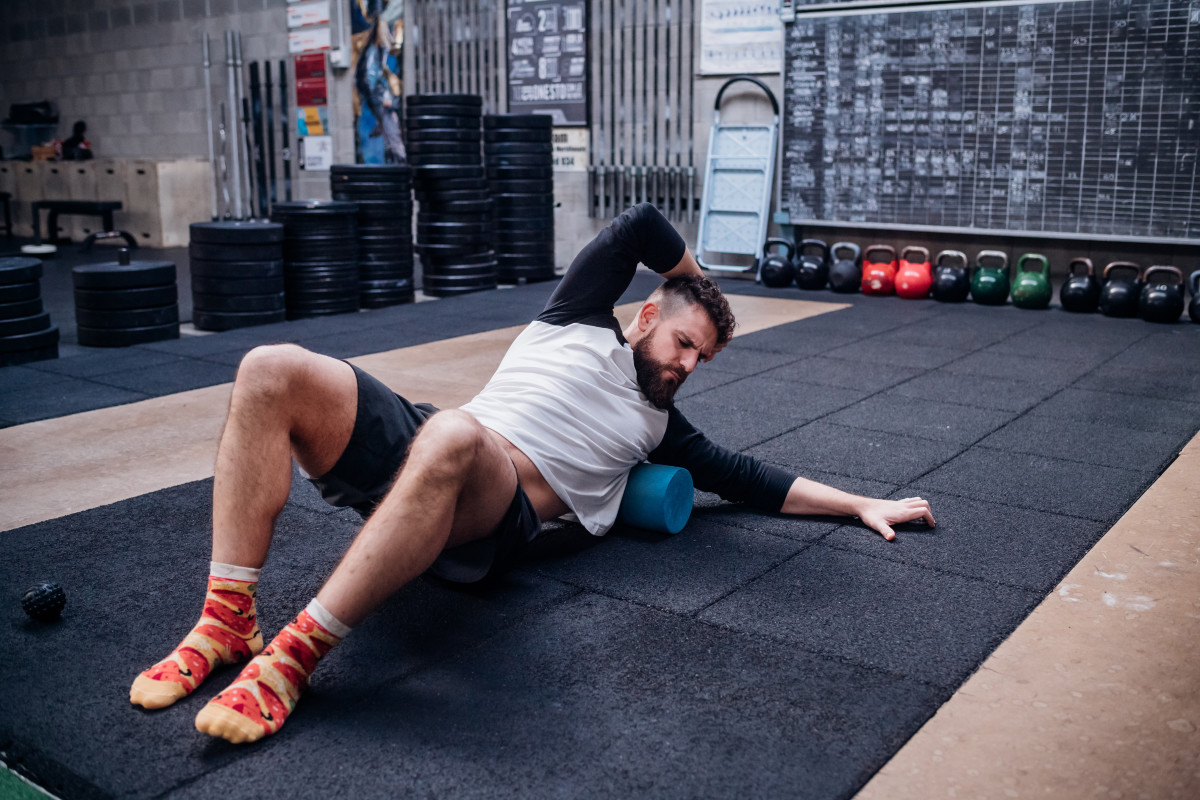
The better our bodies bend, the better they perform.
Eugenio Marongiu/Getty Images
How to Start Mobility Training
Don’t think of mobility as a specific type of workout, but rather as a general athletic skill, like strength or power or speed, Holder says.
And as with building strength or speed, you need to build mobility with multiple techniques.
At the bare minimum, Holder suggests a warmup routine with three components:
- Myofascial work like foam rolling or ball rolling.
- Controlled dynamic stretches.
- Bodyweight movements, like the squat or lunge.
Most important: move slowly and deliberately. Controlled dynamic stretching will increase joint range-of-motion and enhance muscle power better than both static stretching (stretch and hold) and ballistic stretching (stretch and bounce), according to a 2017 study published in Sports Medicine.
Second, base your warmup on your workout. Before lower-body workouts, do hip circles, legs swings, and Buddha squat holds to open up the musculature around your hips, quads, hamstrings, calves, and ankles. Before upper-body workouts, do scarecrows and shoulder circles to increase range-of-motion in the shoulders (specifically the rotator cuff).
Matching your warmup with your workout will not only activate the muscles you're focusing on, but also cement proper joint alignment and muscle activation in your brain, Holder adds.
In addition to pre-workout mobility, incorporate functional movements into your daily workouts. Trade your typical cardio for swimming or rowing to improve upper-body range-of-motion. Work moves like bear crawls or duck walks into your strength sessions.
Lastly, for serious range-of-motion gains, turn active recovery day into a low-intensity mobility day. Take a yoga class or do one of your warmup routines that focuses on your trouble areas, like tight shoulders or hamstrings, Holder suggests.
The Best Mobility Exercises
Each of the mobility exercises below can help with your full-body mobility, especially parts that tend to be tight such as your back, hips, and wrists. By doing the exercises with one another you can loosen tight muscles and meet your goal of gaining a fuller range of motion throughout your body.
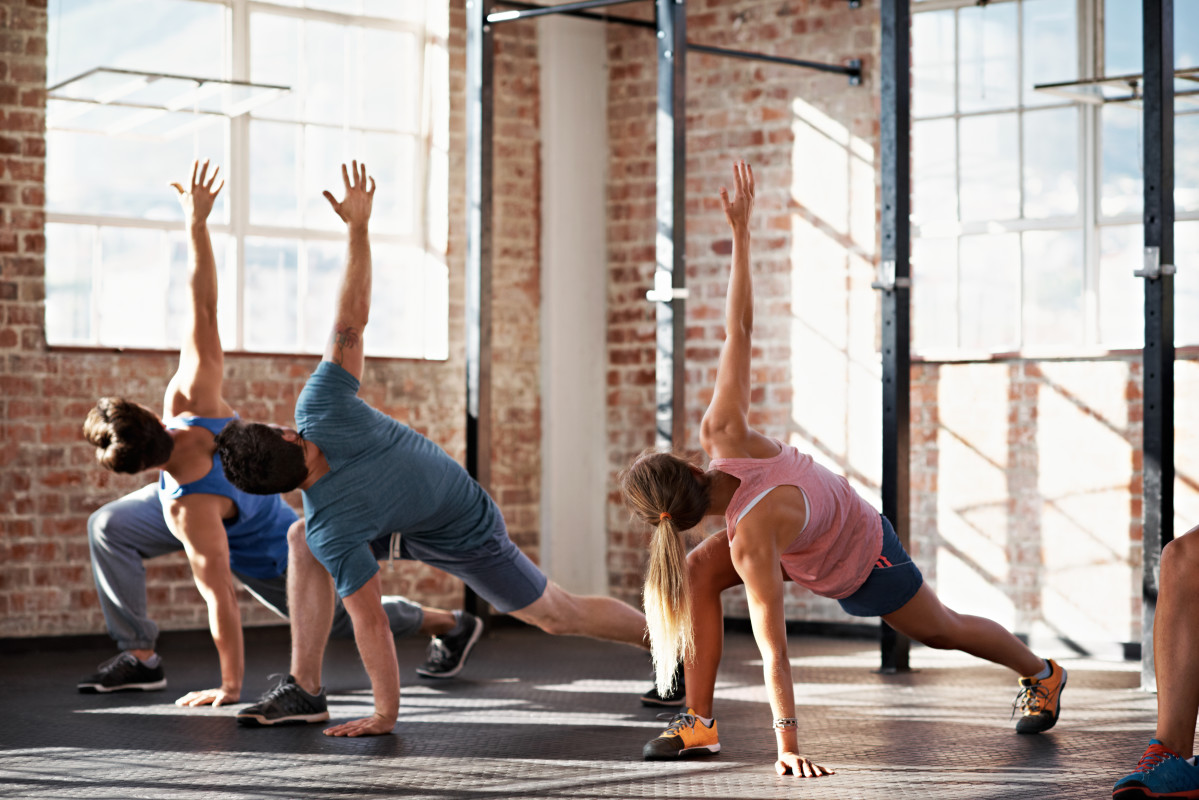
World's Greatest Stretch
kupicoo/Getty Images
The World's Greatest Stretch
The name is no exaggeration. If you only have time for one mobility move, make it the world's greatest stretch. It hits the key areas affected by sitting at a desk for hours and though "stretch" is in the name, it strengthens as it lengthens, like the best mobility moves.
Good For: Hips, thoracic spine, ankles.
How to Do It: Step forward with your left leg in a lunge. As you lower, set your right hand on the floor even with your left foot. Your right knee should remain above the ground. w move your left elbow toward the inside your left foot, and rest it on the floor. Square your hips so you feel a stretch on both sides, and try to keep your back as flat as possible. Move your left hand outside your left foot, and twist to reach for the ceiling.
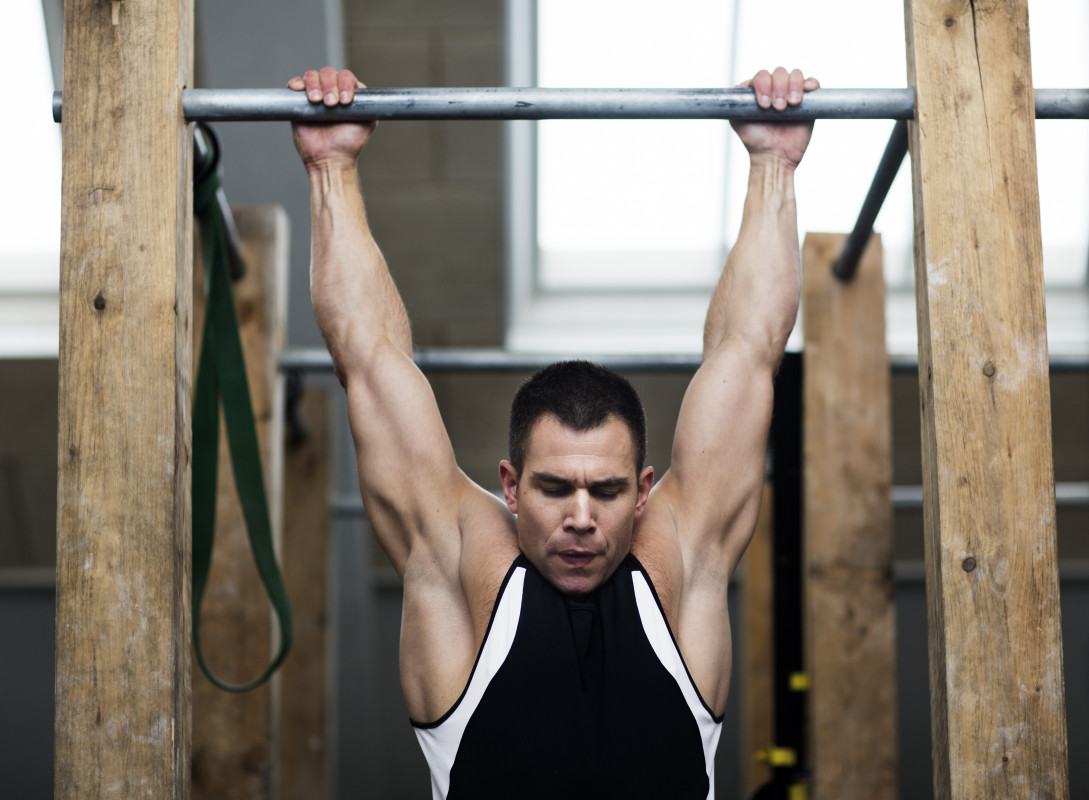
Dead Hangs
Solskin/Getty Images
Dead Hangs
Addressing the tissue around your lats can help reduce tightness in your upper back and shoulders. Dead, or lat hangs, can work to stretch the joints and muscles and ultimately give you greater mobility, and flexibility and can also help improve your grip strength for exercises like deadlifts and pull-ups.
Good For: Upper back and shoulders.
How to Do It: With your arms about shoulder width apart, grab onto a secure pull-up bar with an overhand grip. With your feet off the ground, keep your arms outstretched and relax your shoulders. Allow your body to sink deeper into the stretch. Hold for 10 to 60 seconds or until you feel a deep stretch in your back.
Elevated Prayer Stretch
Commonly performed in yoga classes on the ground, the prayer stretch (watch a demonstration here) opens up your hips, shoulders, and lower back. By elevating your torso by resting your elbows on a bench, you can get a deeper stretch, especially in your lats.
Good For: Hips, shoulders, and back.
How to Do It: With a bench in front of you kneel on the ground in front of it and reach your arms straight out. Resting your elbow on the bench and bend them to point your fingers at the ceiling. Let your head sink between your arms and sit back towards your heels with your feet hip-width apart. Breathe deeply as you continue to sink deeper into the stretch and hold for 15 to 30 seconds.
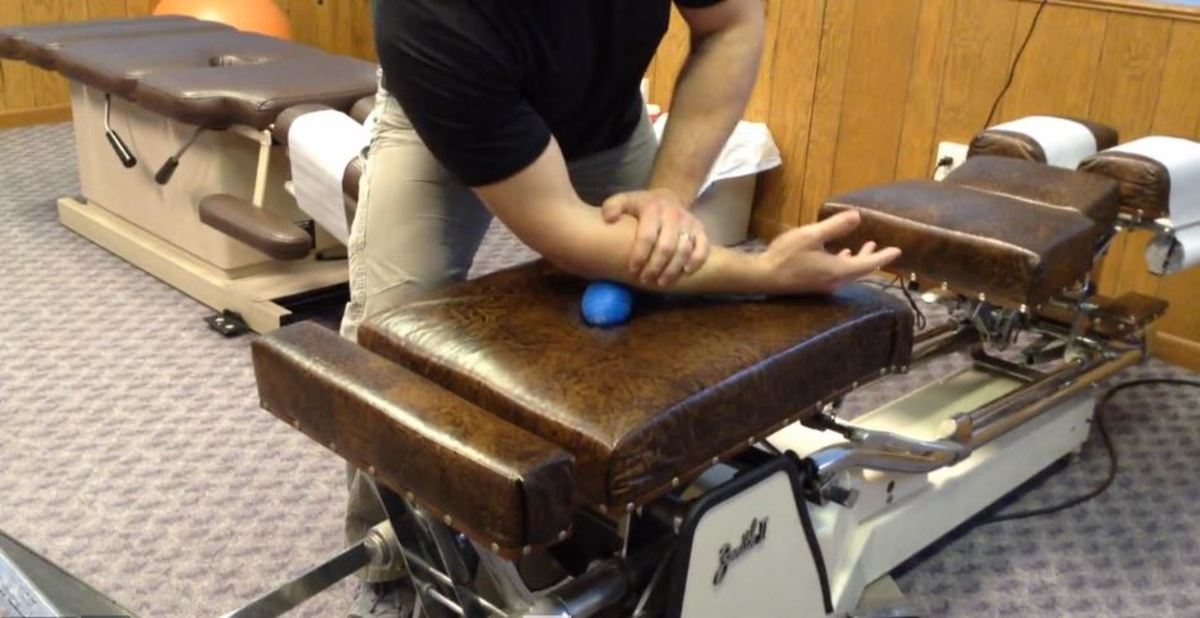
Forearm and Triceps Smash
Courtesy MobilityWOD.com
Forearm and Triceps Smash
Elbow pain, also known as tennis elbow even when athletes never pick up a racket, is repetitive-use injury largely caused by the forearm muscles which attach to the outside of the elbow. The forearm and triceps smash can help ease pain and tension caused by overuse by loosening up muscles on both sides of the joint and increasing the range of motion of both your elbows and shoulders.
Good For: Elbows.
How to Do It: First, your forearm. You’ll need a lacrosse or tennis ball. Find a counter or bench. Turn your left hand over so the palm faces up. Place the ball underneath your forearm where the wrist meets the forearm. Use your other arm to apply pressure to the top of your left forearm. Contract your hand into a fist and hold for a few seconds. Relax for two seconds, then repeat. You can also make circles with the hand. Repeat on the other arm.
w, your triceps. If you’re in the gym, place a barbell on the squat rack reaching shoulder height and place your left arm on it, just above your elbow. Take your right hand and push down on your left bicep so you can apply pressure between the barbell and your tricep muscle. Next, rotate your left palm toward your body and then the opposite way. Doing 3 sets and of 5 to 8 reps per arm can help reduce pain and loosen your tight muscles.
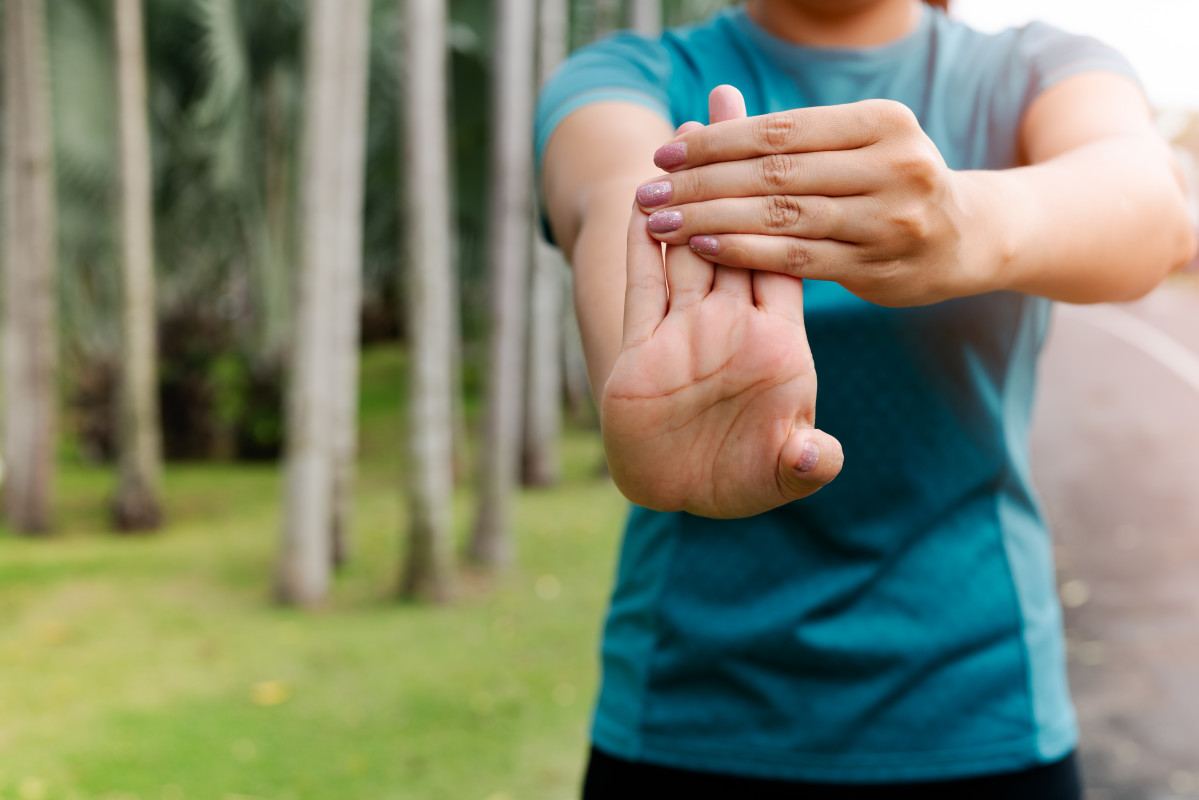
Wrist Flexor Stretch
Cavan Images/Getty Images
Wrist Flexor Stretch
Addressing wrist flexibility issues for exercises like front squats can be a game-changer for a lot of athletes. If you are having trouble getting your wrists into the front-rack position for a front squat, train your wrist flexor mobility.
Good For: Wrists.
How to Do It: Start by placing your right hand straight out in front of you with your palm facing down. Use your left hand to gently pull your hand and fingers upward without moving your arm until you feel a light stretch. Don’t try to do too much the first time around, this will take some time and repeated effort to help relieve tension over time. Hold for 15 to 30 seconds and repeat 2 to 4 times.
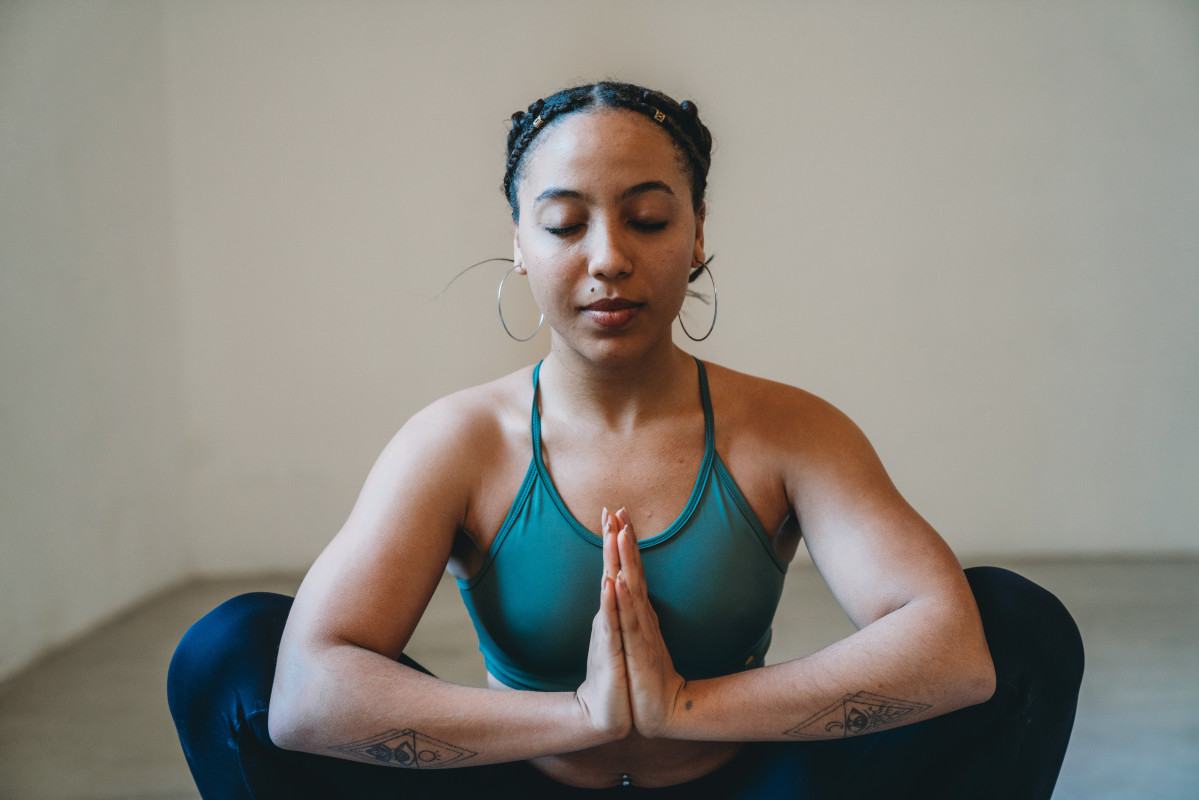
Frog Squat
FilippoBacci/Getty Images
Frog Squat
Sitting in a chair at a desk all day can lead to tight hips and an achy back. This move relieves tightness and pain by opening your hips and engaging your glutes.
Good For: Hips and lower back.
How to Do It: Stand up straight with your feet just past shoulder width apart with your toes pointing slightly outwards. While maintaining an upright position push your hips back and descend into a squat position. Next, put your hands together and place your elbows on the inside of your knees. Lean forward slightly and lift your hips into the air until you feel the tension in your hamstrings. Once the tension builds, lower yourself back into a squat position. Repeat for 3 to 5 sets of 7 to 10 reps.
How to Track Mobility Progress
Tracking your mobility progress is not as simple as gauging your running time or hitting your bi-monthly squat PR. Keeping a journal or taking videos of your mobility training can be helpful for comparing how you look and feel through each movement pattern over time.
As for the amount of time it takes to see results, Scott explains that “true mobility training is much like strength training, where it could take anywhere from six to 12 weeks to actually see a change in the ability to further extend the muscle.”
He also adds the best way to track mobility progress is by working with a trainer or someone who has a certification in functional movement screening, which is a more standardized way of seeing how an individual is moving in their everyday life.
Who Should Do Mobility Mork?
Literally everyone should add movement work to their warm-up. Just because you know your way around a gym doesn’t mean you in any way have good range-of-motion, says Joe Holder, a performance specialist at S10 gym in New York, Nike trainer/run coach, and founder of The Ocho System. “Mobility isn't a skill that is contingent upon body-fat percentage.”
Wickham agrees: “Your body doesn't care how long you've been working out. If your shoulder has limited range-of-motion and you keep jamming it every time you perform a pushup, bench press, or snatch, it's eventually going to push back by way of injury.”
How Often Should I Do Mobility Training?
How often you should perform mobility stretches depends on your goals and your individual body. “If you have a specific restriction and are trying to increase mobility, I recommend doing static stretches on a daily basis,” says Jake Landes, a Nashville-based physical therapist. “If I am just trying to maintain health and trying to keep myself mobile, then I recommend people do mobility training exercises three to four times a week.”
Many personal trainers also suggest working on your mobility for a few minutes every day rather than one or two big sessions a week. “I like thinking of mobility as part of our personal pre-game warmup,” Kent says, “something that can be done every day for 5-10 minutes. Life is dynamic, we have to train for it.”
Everyone’s mobility training will and should look different. If you are looking to be more mobile overall but have a busy schedule, sticking to a basic mobility routine for a few minutes every day can help you get the results you are looking for. If you are an athlete and have a specific mobility goal in mind, like squatting below parallel, spending 20 minutes doing specific movements like frog squats and prayer stretches before your workout can be beneficial.
Does Mobility Training Build Muscle?
Ask a room full of strength training coaches, physical therapists, and personal trainers if mobility training builds muscles and you’ll get a range of answers from “yes, of course” to “no, that’s impossible.” What we do know is that when your body is able to move in a maximum range of motion, you can improve your overall quality of training. For example, if you improve your hip and ankle mobility you can squat deeper with proper form leading to bigger and stronger glutes and quads. So while mobility training itself may not build muscle, it can act as a catalyst, putting your body in the correct positions to build strength and gain muscle.
Is Mobility Better Than Strength?
You can’t really have strength without mobility and you can’t have mobility without some kind of strength. On the surface, strength and mobility don’t seem to be interconnected but that couldn’t be further from the truth. While it’s hard to say which one is “better” if you think about it, mobility is a building block for strength. If your muscle and the joints surrounding said muscle aren’t mobile, you won’t be able to get into the correct positioning for a squat, run as far as you used to, or comfortably press overhead.
While they work in tandem with one another, strength and mobility have separate functions. Strength, by definition, is the ability to exert force in order to overcome resistance. In the fitness world, this looks like a person’s ability to lift or pick up heavy objects. Mobility on the other hand is a person's ability to move their body or a part of their body through a full range of motion. Both are important and essential aspects of living a healthy life inside and outside of the gym.
Is it Okay to Do Mobility Training Every Day?
According to Scott, most people should do mobility training every day. For his clients, he takes a page from Dr. Andreo Spina, a movement coach and Creator and CEO of Functional Anatomy Seminars.
“There is something I prescribe most people on a daily basis… it’s what we call controlled articular rotations,” Scott says. “With this, we're trying to get each and every joint in the body that we use on a daily basis to move through its full range of motion so that we can at least maintain our current mobility,” Scott says. “It's much like you brush your teeth every day, you want to brush your joints every day.”
For Scott, it’s as simple as a five-minute routine in the morning and in the afternoon or at night after work to keep your body healthy and mobile.
What Muscles Are Used to Stand Still?
There are several different muscles and muscle groups our bodies use to stand. While standing is a natural response for many of us, our body actually has to work fairly hard to perform this movement. When standing, the primary muscles we use are the quads, glutes, and hamstrings. Our core muscles are also activated as they provide us with the stability to move without falling over.

